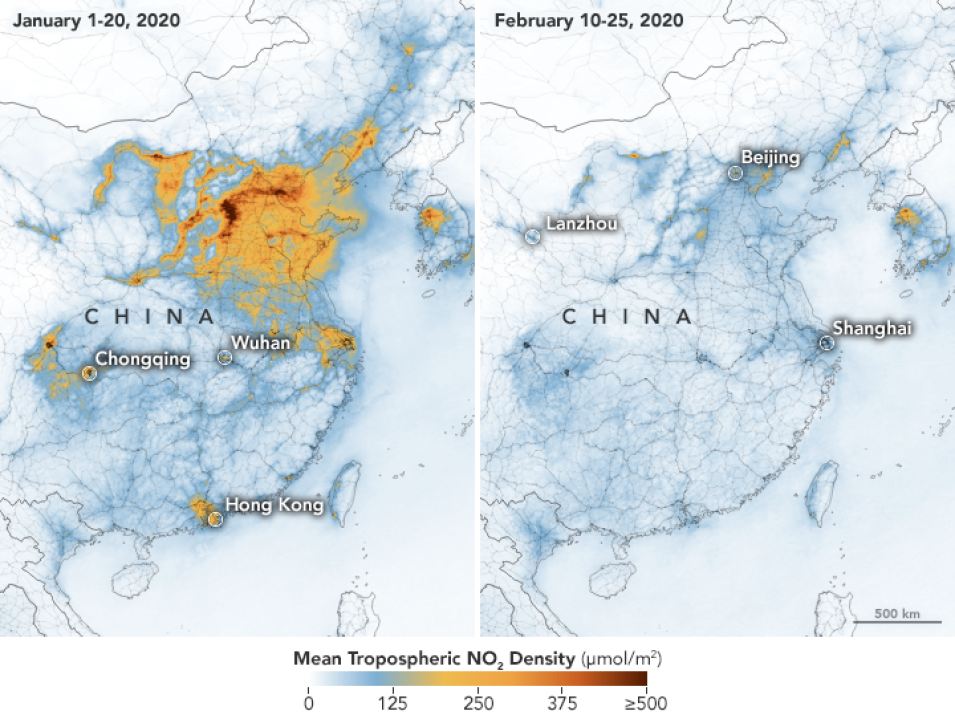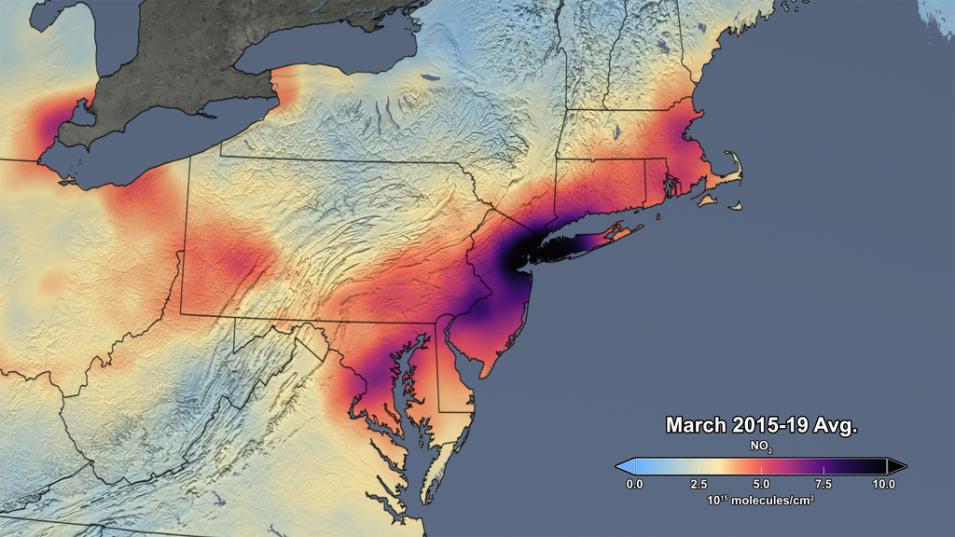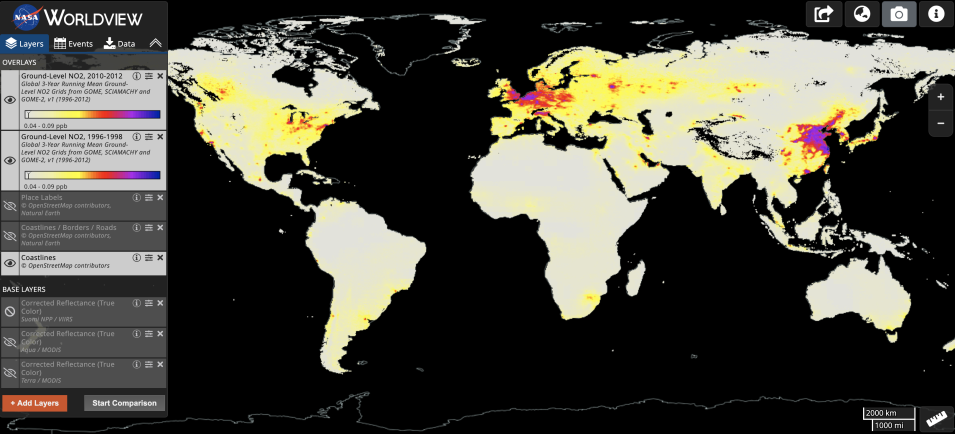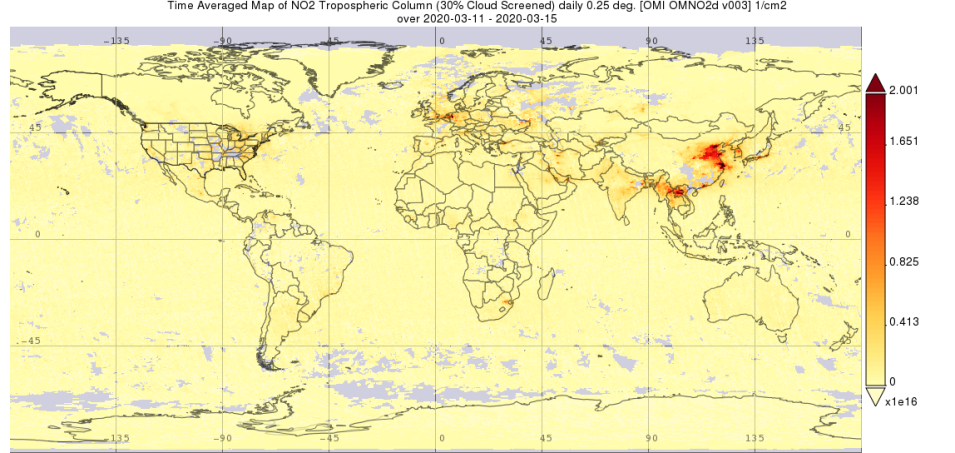Nitrogen dioxide levels decrease when businesses and factories close, or when there are fewer vehicles on the road. Past observations have shown that air pollution usually decreases during China's Lunar New Year celebration, for example, and then increases once the celebration is over. But this year nitrogen dioxide didn't rebound as it usually does.
A preliminary analysis by NASA researchers, discussed on NASA's Earth Observatory, compared nitrogen dioxide values detected by the Ozone Monitoring Instrument (OMI) on NASA's Aura satellite in 2020 with the average amounts detected at this time of year from 2005–2019. In early 2020, nitrogen dioxide values in eastern and central China were 10 to 30 percent lower than what is normally observed for this time period. There is corroborating evidence that the change is at least partly related to the economic slowdown following the outbreak of coronavirus.
In addition to OMI, the Tropospheric Monitoring Instrument (TROPOMI) on the European Space Agency's Sentinel-5 satellite also measures nitrogen dioxide. The maps produced by Earth Observatory compare TROPOMI measurements of nitrogen dioxide density across China from January 1–20, 2020 and February 10–25.
Access NO2 Data
You can access research-quality NO2 data to assess regional air quality and potential trends in industrial activity. The data are available at a daily time step (one view per day, when clouds allow) from TROPOMI and OMI using Earthdata Search. Giovanni and Worldview can be used to explore and visualize the data.
- Earthdata Search provides OMI NO2 data in daily gridded (0.25 degree latitude x 0.25 degree longitude) and non-gridded products at the native resolution (minimum pixel size of 13x24 km2). Data are in Hierarchical Data Format Release 5 (HDF5) format and can be opened using the freely available NASA tool, Panoply. The data are typically provided with a 48-hour lag.
A tutorial on using OMI NO2 data, from NASA's Health and Air Quality Applied Sciences Team (HAQAST), is available as a PDF. An Earthdata webinar, Subset NASA Ozone Monitoring Instrument Data, provides information on subsetting OMI data.
- TROPOMI NO2 data can be accessed in Earthdata Search and at NASA's Goddard Earth Sciences Data and Information Services Center (GES DISC) via cooperative agreement with the European Space Agency (ESA). The data are at a minimum of 5.5x3.5 km2 pixel resolution in Network Common Data Form (NetCDF) that can also be opened in Panoply.
These TROPOMI data are typically available 10 days after measurement by the instrument. ESA provides additional information on this data product. Access TROPOMI NO2 Data from Earthdata Search. Access TROPOMI NO2 Data at GES DISC.
Visualize NO2 Data
The Global Nitrogen Dioxide Monitoring Home Page visualizes OMI NO2 data for major cities around the world for January through April 2020, compared to a 2015 to 2019 baseline. For example, these data show a 30 percent drop in NO2 over the Northeast United States for March 2020 compared to baseline.



